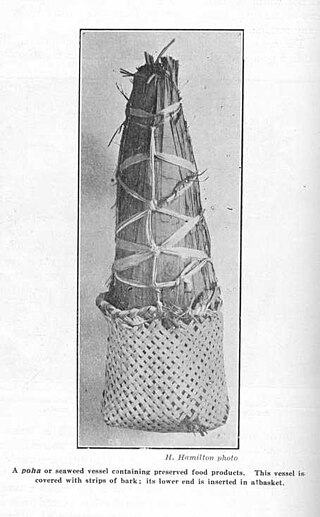
The bushwren, also known as the mātuhituhi in the Māori language, was a very small and almost flightless bird that was endemic to New Zealand. It had three subspecies on each of the major islands of New Zealand, the North Island, South Island, and Stewart Island / Rakiura and nearby smaller islands. The species disappeared gradually after the introduction of invasive mammalian predators, last being seen on the North Island in 1955 and the South Island in 1968. Attempts were made to save the remaining population on small islands off Stewart Island, but they ultimately failed with the death of the last remaining known birds in 1972.

Scytosiphon lomentaria is a littoral brown seaweed with an irregularly lobed many filamentous form. It is a member of the Phaeophyta in the order Ectocarpales and grows attached to shells and stones in rock-pools and in near-shore waters. The attachment to the substrate is by a small disc shaped holdfast.

Corallina officinalis is a calcareous red seaweed which grows in the lower and mid-littoral zones on rocky shores.

Durvillaea antarctica, also known as cochayuyo and rimurapa, is a large, robust species of southern bull kelp found on the coasts of Chile, southern New Zealand, and Macquarie Island. D. antarctica, an alga, does not have air bladders, but floats due to a unique honeycomb structure within the alga's blades, which also helps the kelp avoid being damaged by the strong waves.

Durvillaea willana is a large species of southern bull kelp endemic to New Zealand.
Mark Adams is one of New Zealand's most distinguished photographers.
Jacqueline Nancy Mary Adams was a New Zealand botanical illustrator, botanical collector, phycologist and museum curator. Throughout her career (1943–1987), she worked at DSIR and later at the Dominion Museum in different roles as technician, artist and assistant curator of botany. Largely self-taught, Adams collected over 3300 botanical specimens in New Zealand, illustrated nearly forty publications on algae and other native plants, and authored numerous scientific publications. Her major work, Seaweeds of New Zealand – An Illustrated Guide, was published in 1994.

John Buchanan was a New Zealand botanist and scientific artist. He was a fellow of the Linnean Society.

Colpomenia sinuosa, commonly named the oyster thief or sinuous ballweed, is a brown algae species in the genus Colpomenia. It is the type species of its genus and is widespread in tropical to temperate zones around the world.

Chaetomorpha aerea is a species of green algae of the family Cladophoraceae.

Clymene coleana, formerly known as Porphyra cinnamomea, is a red alga species in the family Bangiaceae. It is the only species in the monotypic genus Clymene. This species is endemic to New Zealand.
Paul Geoffrey Annear was a New Zealand contemporary jeweller.

Palmophyllum is a genus of alga. This genus is known to grow in low light conditions and at depth. The known distribution of this genus is being extended as deeper waters are explored.

Wendy Alison Nelson is a New Zealand marine scientist and world expert in phycology. She is New Zealand's leading authority on seaweeds. Nelson is particularly interested in the biosystematics of seaweeds/macroalgae of New Zealand, with research on floristics, evolution and phylogeny, as well as ecology, and life history studies of marine algae. Recently she has worked on the systematics and biology of red algae including coralline algae, distribution and diversity of seaweeds in harbours and soft sediment habitats, and seaweeds of the Ross Sea and Balleny Islands.
Marion Elizabeth Tylee was a New Zealand artist.

Pounamu is a term for several types of hard and durable stone found in the South Island of New Zealand. They are highly valued in New Zealand, and carvings made from pounamu play an important role in Māori culture.

Durvillaea poha is a large, robust species of southern bull kelp found in New Zealand.

Pōhā are traditional bags used by the Māori people of New Zealand made from southern bull kelp, which are used to carry and store food and fresh water, to propagate live shellfish, and to make clothing and equipment for sports. Pōhā are especially associated with Ngāi Tahu, who have legally recognised rights for harvesting source species of kelp.
Victor Wilhelm Lindauer (1888–1964) was a New Zealand phycologist, collector and teacher.

Rhodymenia wilsonis is a species of marine red algae first described in 2010. In New Zealand it was previous known as Rhodymenia obtusa and Epymenia wilsonis.














